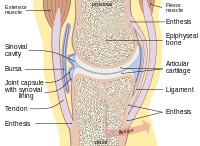
Photo from wikipedia
To understand the source and nature of the ore-forming fluids of the Edmond hydrothermal field on the Central Indian Ridge, we studied the He-Ar isotope composition and fluid inclusions of… Click to show full abstract
To understand the source and nature of the ore-forming fluids of the Edmond hydrothermal field on the Central Indian Ridge, we studied the He-Ar isotope composition and fluid inclusions of the hydrothermal precipitates. Our results show that the sulfide samples contain noble gases He, Ne, Kr, and Xe with their abundances in between those of air-saturated water (ASW) and mid-ocean ridge basalt (MORB). The 3He/4He ratio varies from 1.3 to 8.7 Ra (n=10, average: 5.1 Ra), whereas the 40Ar/36Ar ratio is from 285.3 to 314.7 (n=10, average: 294.8). These results suggest that the He was derived from a mixture of MORB with variable amounts of seawater, but the Ar in the ore-forming fluids trapped in the sulfides is predominantly derived from seawater. The fluid inclusions of barite have a wide range of homogenization temperatures and salinities varying from 163°C to 260°C and 2.6 wt% to 8.5 wt% NaCl equiv., respectively. It is suggested that the ore-forming fluids were produced by phase separation, which agreed with the present-day vent fluid study.
Journal Title: Acta Oceanologica Sinica
Year Published: 2017
Link to full text (if available)
Share on Social Media: Sign Up to like & get
recommendations!